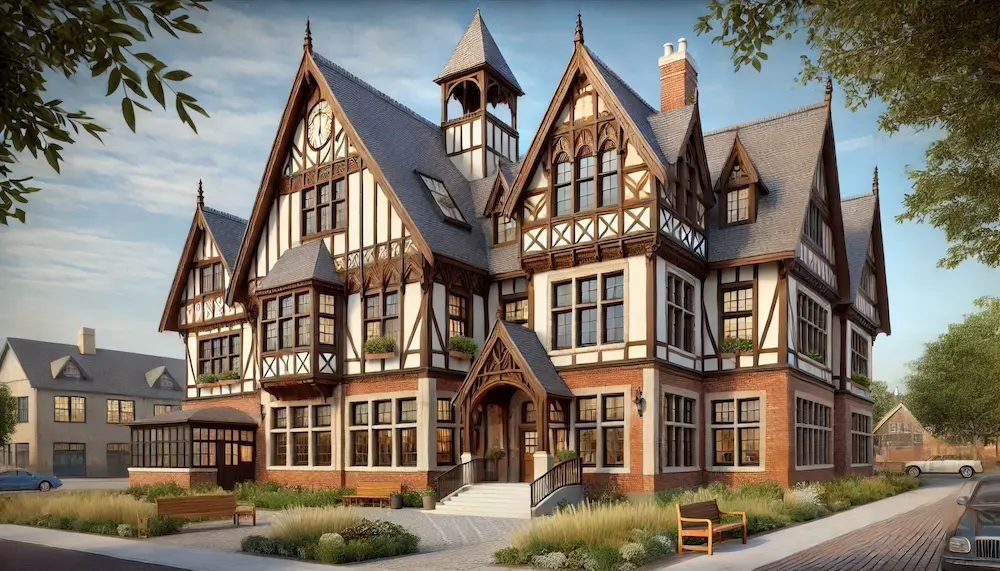Tudor Revival architecture, inspired by early 16th-century English building traditions, has been employed in various educational institutions, including elementary schools.
Introduction to Tudor Revival Elementary School Architecture
Tudor Revival, also known as Mock Tudor, emerged in the late 19th and early 20th centuries, drawing inspiration from medieval English architecture. In educational settings, this style aimed to evoke a sense of tradition and academic prestige.
History and Origins of Tudor Revival Elementary School Architecture
The Tudor Revival style gained prominence in the United States during the early 20th century, particularly in residential architecture. Its application in school design was less common but notable, with architects seeking to imbue educational buildings with a sense of historical continuity and stability.
Key Features of Tudor Revival Elementary School Architecture
- Half-Timbering: Exposed wooden framework with stucco or masonry infill, reminiscent of medieval English structures.
- Steeply Pitched Gable Roofs: High, sloping roofs often adorned with dormer windows.
- Tall, Narrow Windows: Grouped casement windows with small panes, sometimes featuring leaded glass.
- Decorative Chimneys: Prominent brick or stone chimneys with intricate detailing.
- Arched Doorways: Tudor arches framing the main entrances, adding to the historic aesthetic.
Applications of Tudor Revival Design in Elementary Schools
Several examples of Tudor Revival elementary schools include:
- Rothenberg Elementary School: Located in Cincinnati, Ohio, and built in 1914, this school showcases Tudor Revival elements with its Collegiate Gothic style.
- Longfellow School: Situated in Madison, Wisconsin, and constructed in phases between 1917 and 1938, this school exemplifies the Elizabethan-Jacobean subtype of Tudor Revival architecture.
- George C. Clarke Elementary School: Found in Fort Worth, Texas, and established in 1914, this school features an institutional version of Tudor Revival architecture.
Considerations When Choosing Tudor Revival Design for Elementary Schools
- Aesthetic Appeal: The historic and picturesque qualities of Tudor Revival architecture can create an inviting educational environment.
- Construction and Maintenance Costs: The intricate detailing and materials may result in higher initial construction costs and ongoing maintenance requirements.
- Functional Layout: Ensuring that the interior spaces meet modern educational needs while preserving the architectural integrity of the style.
- Historical Preservation: Existing Tudor Revival school buildings may be subject to preservation guidelines, influencing renovation and expansion efforts.
Conclusion
Tudor Revival architecture, with its distinctive historical elements, has contributed to the design of some elementary schools, offering a unique blend of tradition and educational purpose. While not as prevalent as other architectural styles in school design, its applications provide charming and enduring educational environments.
